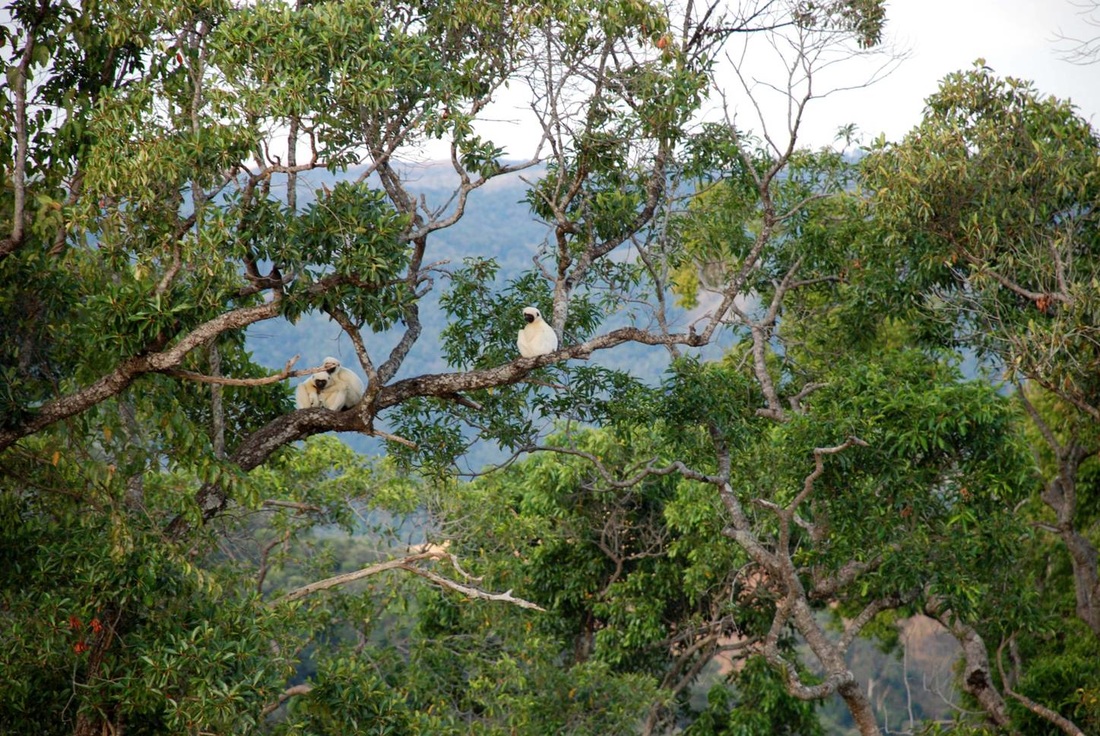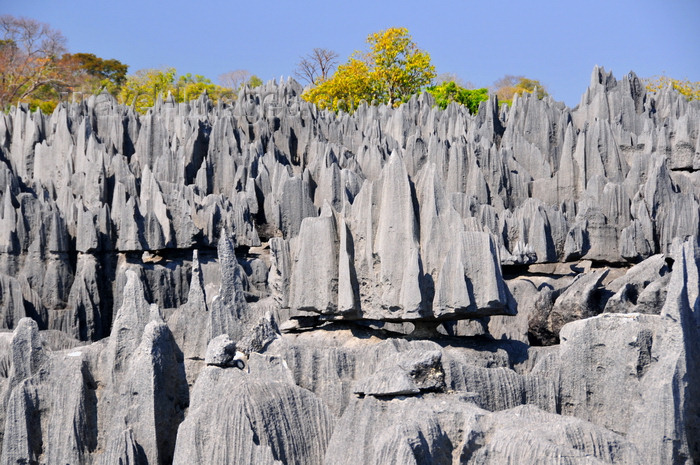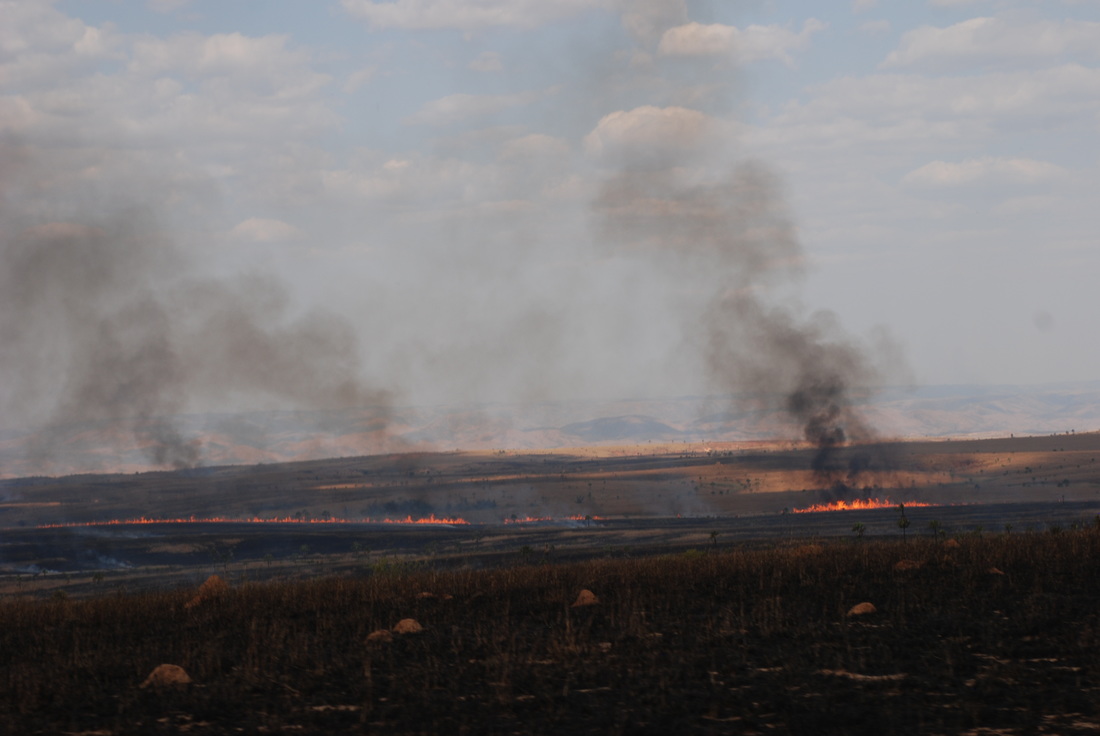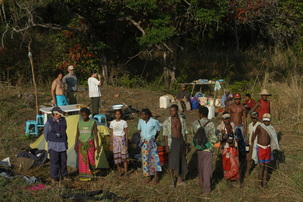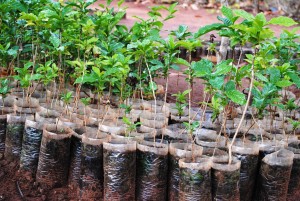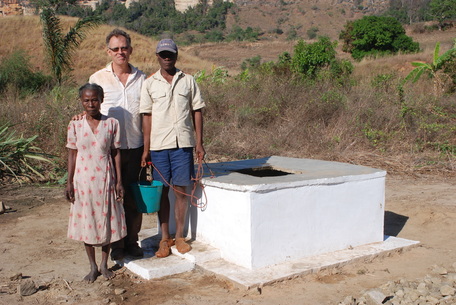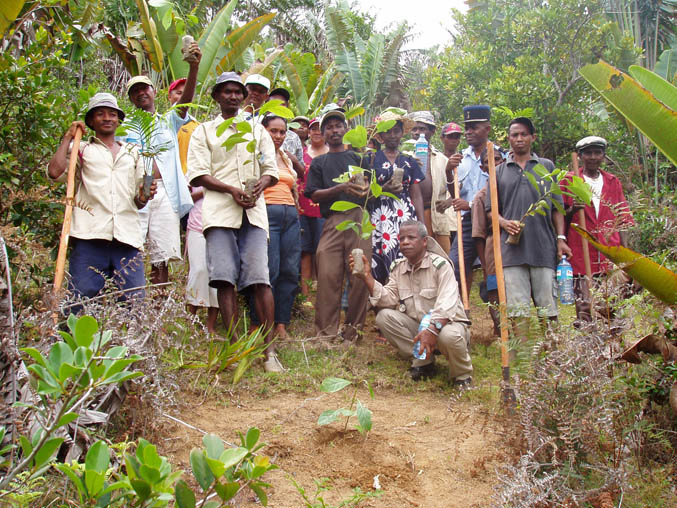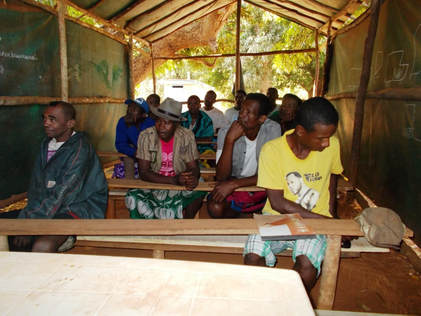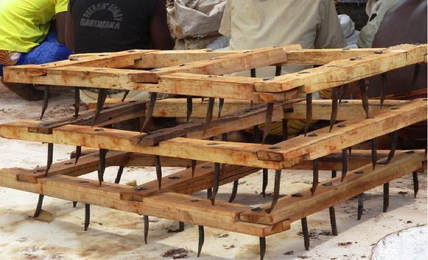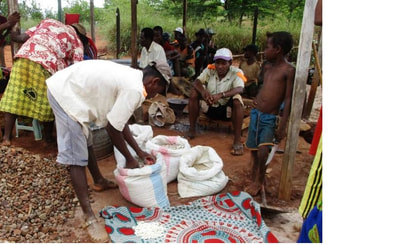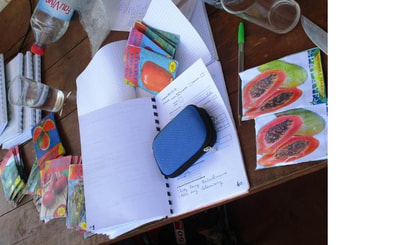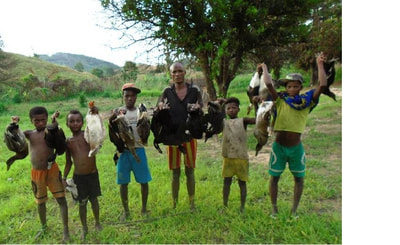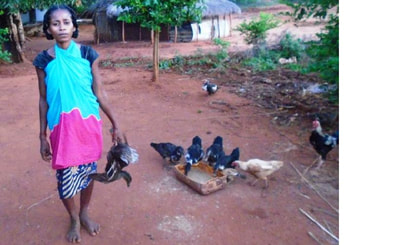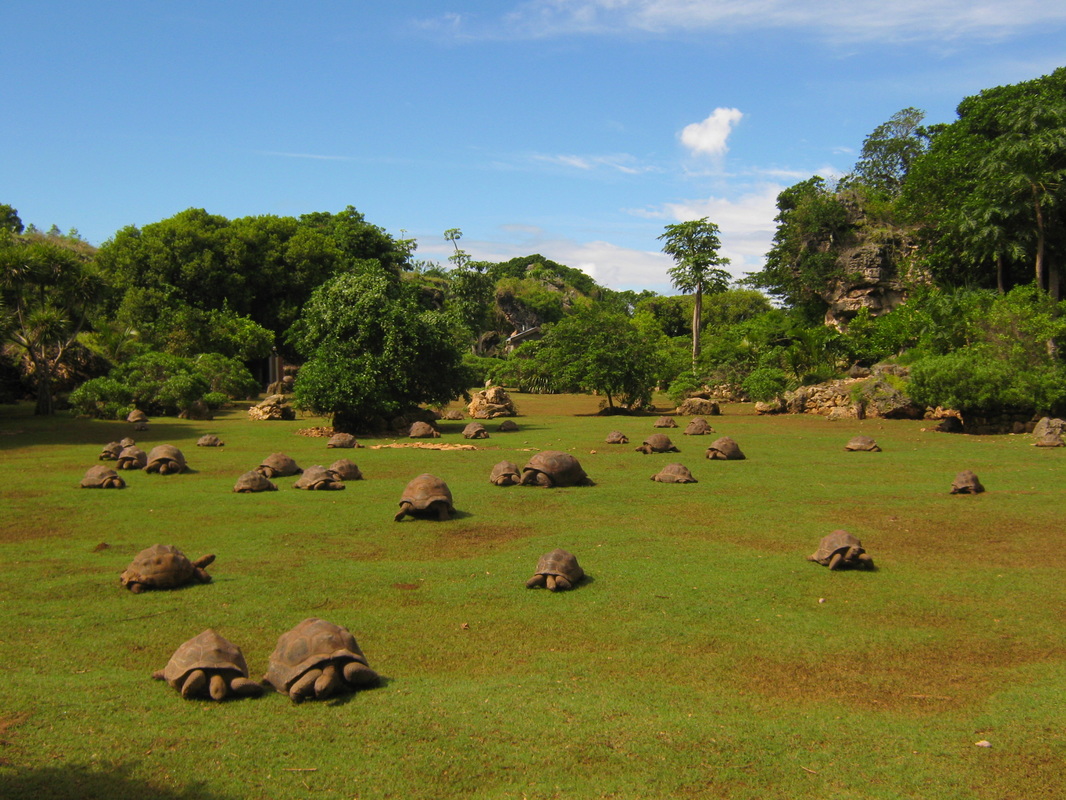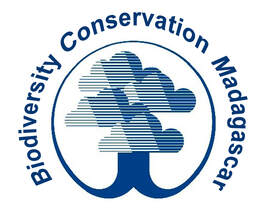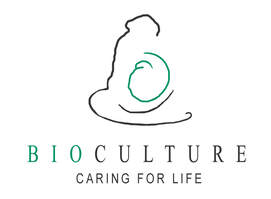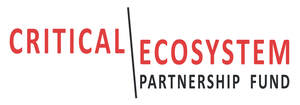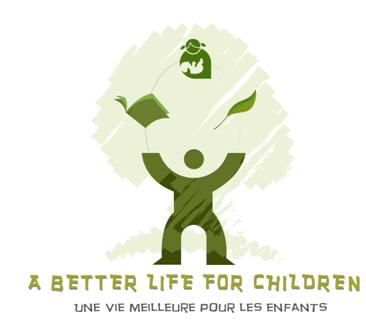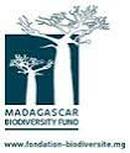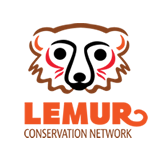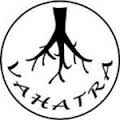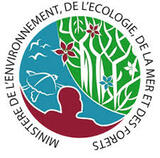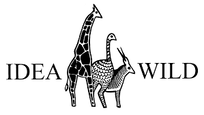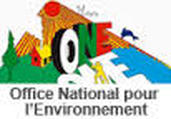Beanka Protected Area (PA)
SiteSize: 17,000 hectares or 170 km2
Location: District of Maintirano, Melaky Region, Western Madagascar Habitat: Critically Endangered dry deciduous forest characterized by high local plant and animal endemism at the species, genera and family levels. |
OpportunityOpportunity: The inhospitable karstic tsingy limestone on which the forest grows limits exploitation. A proactive community-based conservation approach is feasible as the local human population is distinctly low and exploitation of forest resources (plants, wood, bush meat, etc.) are notably limited.
|
ThreatsMain threat: Fire damage caused by humans to improve pasture for cattle.
Secondary threats: Deforestation, oil exploration, human-wildlife conflict, and hunting. Habitat status: Over 97% of Madagascar’s dry deciduous forests have been destroyed by uncontrolled burning and clearing for grazing and agriculture. |
Our approach
We take time to understand and appreciate communities' needs and fully involve them in the development of conservation strategies. Limited employment and education opportunities, high levels of poverty and a reliance on forest resources for construction, animal protein and medicine means that the local communities had few options than to illegally exploit Beanka’s protected forest. To alleviate this unsustainable reliance on forest resources, we assist by establishing and providing alternative sources of income, resources, employment and improving education.
Our interventions
|
We have:
|
|
Our achievements
The results have been:
- a decrease in illegal poaching and timber exploitation,
- improved motivation among villagers to protect the forest,
- greater environmental awareness,
- improved human livelihoods,
- higher levels of trust which has in turn facilitated a change in people’s behaviour, and
- pride among the local population to be associated with the protection of the forest and the involvement of BCM has raised regional awareness about Beanka.
|
|
Investigating what the communities need for their livelihood while conserving the biodiversity
We organized a meeting with the local Communities living around the Beanka New Protected Area (NPA). Participants are asked what they expect from partners such as BCM to improve their living conditions and income resources so that the activities remain within the framework of the long-term conservation of the Beanka forest.
With regard to seeds which can produce more profitable yields, participants consider that beans, chickpeas, peanuts and lima beans which grow efficiently in the Beanka region;
- The community members have noted the importance of the materials they think are necessary for agriculture and livestock, namely: Kubota, work equipment that cannot be offered because of its expensive cost, plows, Seeds, insecticides and sprays;
- Participants are informed of the materials purchased with the FAPBM funding which will be allocated to them, namely poultry breeders, poultry wire mesh resistant to carnivores that prey on poultry, plows and harrows;
Agriculture and farming materials
Eleven plows and 11 harrows were shared in the seven villages (Ankilimanarivo, Vohimihary, Andranogidro, Maperabe, Ambalabao, Ambinda and Bokarano) which bring together the major parts of the Population affected by the conservation project.
Plowing through the use of plows and harrows compared to the traditional method adopted by communities around NAP Beanka controls perennial weeds and prevents the growth of other weeds in the spring at the same time as the crop. At the same time, it breaks the cycle of diseases and controls several enemies of the crops (slugs, tipulas, seedling flies, moths, gray worms).
With regard to seeds which can produce more profitable yields, participants consider that beans, chickpeas, peanuts and lima beans which grow efficiently in the Beanka region;
- The community members have noted the importance of the materials they think are necessary for agriculture and livestock, namely: Kubota, work equipment that cannot be offered because of its expensive cost, plows, Seeds, insecticides and sprays;
- Participants are informed of the materials purchased with the FAPBM funding which will be allocated to them, namely poultry breeders, poultry wire mesh resistant to carnivores that prey on poultry, plows and harrows;
Agriculture and farming materials
Eleven plows and 11 harrows were shared in the seven villages (Ankilimanarivo, Vohimihary, Andranogidro, Maperabe, Ambalabao, Ambinda and Bokarano) which bring together the major parts of the Population affected by the conservation project.
Plowing through the use of plows and harrows compared to the traditional method adopted by communities around NAP Beanka controls perennial weeds and prevents the growth of other weeds in the spring at the same time as the crop. At the same time, it breaks the cycle of diseases and controls several enemies of the crops (slugs, tipulas, seedling flies, moths, gray worms).
Sixteen seed varieties were allocated to the PAPs of the seven villages set out above. Seeds bought and distributed free of charge were selected according to the wishes of the village participants present at our meeting in Ambinda in September (2016).
Below is an attachement where you can see all the achievements we made in 2016 in Beanka.
| BCM Achievements in Beanka 2016 | |
| File Size: | 2093 kb |
| File Type: | |
Where next?
|
1. Reintroduce giant tortoises to restore ecological balance.
Problem: fire threatening dry forest Solution: Giant tortoises once consumed large amounts of leaf litter and understorey vegetation. Today, this dry matter accumulates and results in intense fires damaging the forest. Together with our Mauritian partners, Bioculture (Mauritius) Ltd and La Vanille Nature Park, we plan to reintroduce giant tortoises to reduce fire intensity and frequency. To learn more, contact Rado. |
2. Education centre
Problem: currently more than 90% of children between 4 to 15 years are illiterate and do not study because of the absence of schools or teaching programs in the villages surrounding Beanka.
Solution: provide materials to construct four schools in the different villages, as requested by the local communities.
Problem: currently more than 90% of children between 4 to 15 years are illiterate and do not study because of the absence of schools or teaching programs in the villages surrounding Beanka.
Solution: provide materials to construct four schools in the different villages, as requested by the local communities.
Our partners and sponsors
Individual sponsors:
Theresa Haine
Theresa Haine
